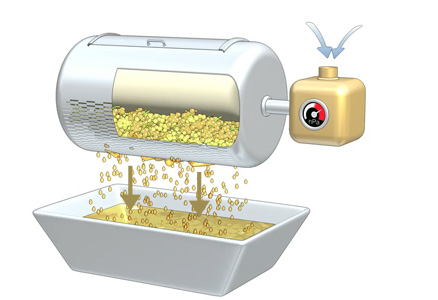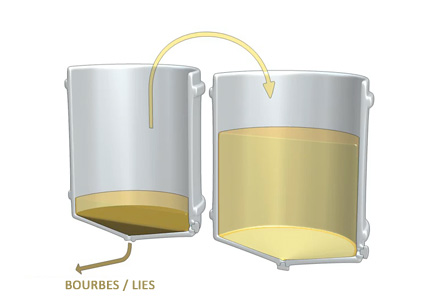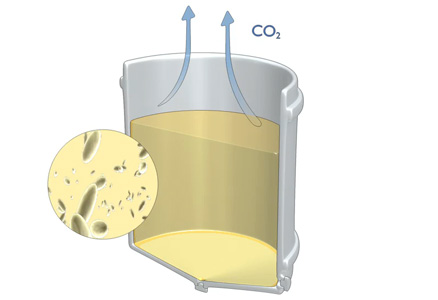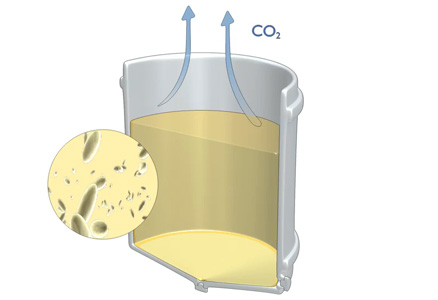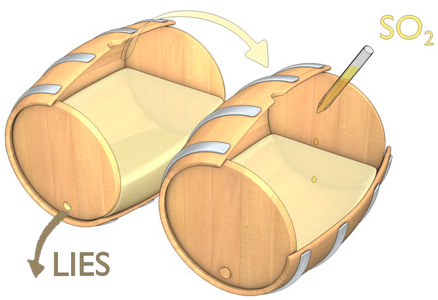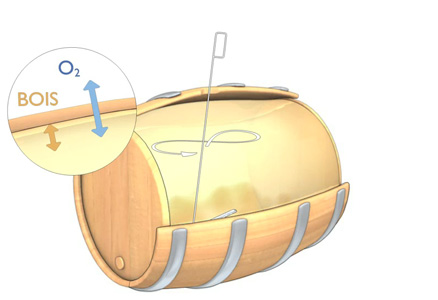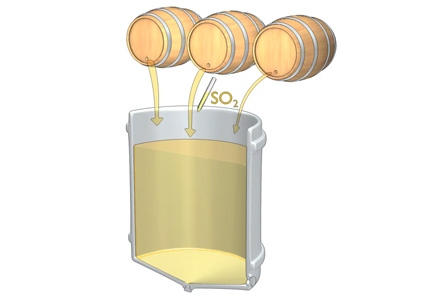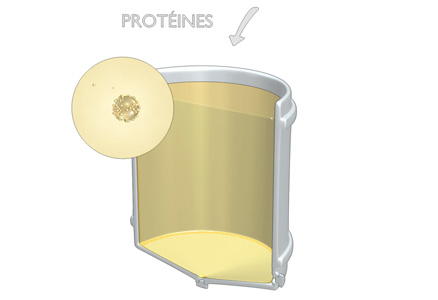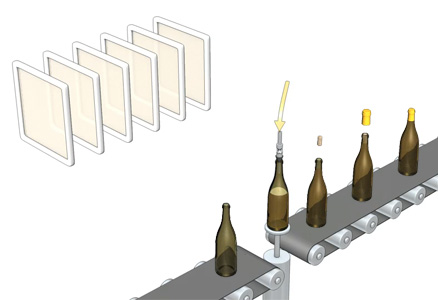The vinification process for white wines is slightly different to that for reds. Unlike with red wines, where the winemaker is seeking to extract tannins and color from the skins and pips through maceration, grapes for white wines are pressed immediately after harvest, usually without being destalked.
The juice is then put in oak barrels or vats and alcoholic fermentation occurs.
White wines in the Bourgogne region are then left to undergo a secondary malolactic fermentation, unlike white wines produced elsewhere. During malolactic fermentation, the malic acid in the juice turns to lactic acid, making the wines smoother.
Watch our animation about vinifying white wines to improve your knowledge!
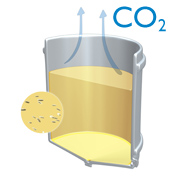
Malolactic Fermentation: microorganisms (lactic bacteria) transform the malic acid that is naturally present in the grapes into lactic acid. New aromas also appear.
The cold stops this fermentation, which is why it often only begins in the spring with the rise in temperatures. This reaction is also accompanied by the release of carbon dioxide. Most often this takes place in barrels.
An inflated bladder presses the grape harvest (whole bunch traditionally) and the juice is
collected in a tank.
The juice is cloudy. The heaviest parts settle to the bottom of the tank: this is the must deposit. This natural phenomenon may be accelerated (eg. cooling). The “clear” juice is put into tanks or barrels, and the must deposit is removed.
Transformation of sugars from the must into alcohol, and aroma release by yeast fermentation (Saccharomyces cerevisiae). The wine is racked, i.e. moved from one container to another.
Microorganisms (lactic acid bacteria) transform malic acid into lactic acid.
Optional step. The “clear” wine is racked, i.e. moved from one container to another (tank or barrel), the lees (deposit at the bottom of the tank or barrel) are removed. The wine remains fragile, sulphur is added to protect it.
The wine is kept in casks (228 litre barrels) for several months. Exchanges with and through the wood take place. If the wine is aged on lees (optional), the batonnage carried out with a stirring stick on a regular basis helps suspend the lees anew. Structural and aromatic development of the wine. Balance and enrich the wine (lees-ageing).
The wine is racked into a tank and its sulphur level is adjusted if necessary. Wine produced from the same plot or several plots in the same appellation, and aged in different barrels, is blended.
Add if necessary protein, mineral, or synthetic fining agents which draw down suspended particles towards the bottom of the tank.
Wine is sometimes filtered to make it limpid and bright. It is then transferred into a tank to be bottled using a bottling machine and corked with a corking machine.
